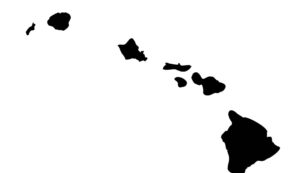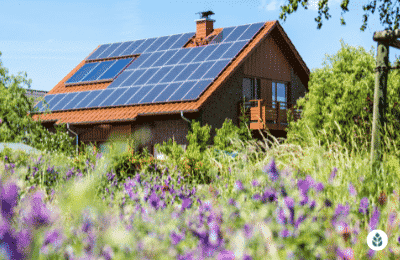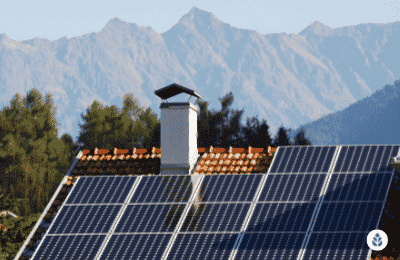 Reviews
Reviews
Hawaii Solar Incentives (Rebates, Tax Credits & More in 2024)
Going solar can be costly, but there are a variety of federal, state and local incentive programs that can make the costs more manageable for Hawaii homeowners. In this guide, you’ll learn:
- What solar rebates and incentives are available in Hawaii?
- How much can the available incentives save you on a solar energy system in Hawaii?
- Which solar perks are the most important to take advantage of in the State of Hawaii?
Each product and or company featured here has been independently selected by the writer. You can learn more about our review methodology here. If you make a purchase using the links included, we may earn commission.
Do Hawaii Solar Incentives Make It Affordable for Homeowners to Go Solar?
Yes, Hawaii’s mix of state, local and federal incentives make solar conversion significantly more accessible and affordable.
The cost of installing a solar energy system in Hawaii is already much cheaper than most areas of the country. The typical price of a solar power system in Hawaii is about $18,645, more than $10,000 below the national average – primarily thanks to the small system size needed in the state. Most residents need a 5.5 kilowatt (kW) system to offset electric bills, compared to the average of 9.5 kW.
While converting to solar is more affordable here than in most other states, the price is still prohibitively high for many property owners. Thankfully, the state’s incentive programs are better than what you’ll find in most other areas of the country.
This is in large part due to the aggressive Renewable Portfolio Standard (RPS) goal, which calls for 40% of the state’s energy to come from clean energy sources by 2030. The resulting perks can save you thousands on your already below-average conversion costs.

Rising Sun Solar

Regional Service
Average cost
Pros
- Many years of experience
- Competitive pricing
- Locally owned and operated
Cons
- Relatively short workmanship warranty

RevoluSun Hawaii

Regional Service
Average cost
Pros
- Great warranty coverage
- Offers products from leading manufacturers
- Many financing options
- Excellent reputation
Cons
- Limited brands of solar equipment available
- Slightly expensive

Apollo Energy

Regional Service
Average cost
Pros
- Women-owned
- Bilingual service associates
- Certified B Corp
- NABCEP-certified technicians
- Makes charitable contributions
Cons
- Relatively young company
- No leases or PPAs
Below, you’ll find information about all of the benefit programs for photovoltaic (PV) solar energy systems available in Hawaii. We also include the average amount each perk can save you.
| Solar Incentives in Hawaii | Incentive Type | Description | Occurrence | Estimated Dollar Amount You Can Receive |
| Federal Solar Investment Tax Credit (ITC) | Federal | Provides a credit to your income tax liability for 30% of your entire conversion cost. This includes panels, batteries, inverters and labor. | One-time: The credit is calculated one time when you file your taxes after conversion. Unused credit can be carried over for up to five years in total. | $5,594, on average |
| Community Renewable Energy Program | State | Includes regulations that allow homeowners to access community solar. This includes a credit for all consumed energy. | Ongoing: Customers who enroll in community solar will continuously receive bill credits for the energy they pull from the community solar farm. | $19,332, on average (varies based on your monthly energy consumption and location) |
| Solar and Wind Energy Credit | State | Provides a massive tax credit amounting to 35% of your system’s equipment and installation costs, up to $5,000. | One-time: The credit is assessed once when you file your taxes after installation. Unused credits can be carried over to the following tax years. | $5,000, on average |
| GreenSun Hawaii | State | This is a solar financing option that helps keep interest rates and down payment requirements to a minimum when going solar. | One-time: Your savings will be assessed once when you apply to the program. | Varies based on your system size and the equipment you install |
| Green Energy Money Saver (GEMS) Program | State | This is a financing program for low-income households that makes solar energy systems far more affordable and accessible. | Ongoing: Savings can be assessed once when you enroll in the program. However, the actual savings will accrue over time. | Varies based on your monthly energy consumption and the system size you need |
| Net Metering | Local | Provides credits toward future electric bills for all excess energy your system generates and pushes to the grid. Net energy metering is NOT mandated in the state. | Always in Effect: Provided you apply and qualify for this perk, you will always be accruing credits when your system sends power to the grid. | Varies based on system size, monthly energy bills, your location, your utility company and more. This perk can help you approach an average lifetime savings of $76,847 |
| Local Incentives | Local | Rebate programs and other incentives offered by utility providers, specific cities and other local entities. | Varies based on the perk. | Varies based on the incentive, your system size and your location |
What Do Hawaiians Need to Know About the Federal Solar Tax Credit?
The federal solar tax credit allows you to write off a large portion of the money you pay to install a solar energy system for your home. The solar tax credit is made available by the federal government and it offers some of the most significant short-term savings in the state.
The credit amount is currently equal to 30% of your installation costs, but this wasn’t always the case. It was originally set to be 30% from 2005, when the program was started, through 2021. Installations in 2022 were set to drop to 26% and those in 2023 to 22%. Initially, the program was to be abandoned in 2024.
However, in August 2022, Congress approved the Inflation Reduction Act (IRA), which bumped the credit rate for 2022 installations and 2023 installations back up to 30%. This retroactively included systems installed before August in 2022. It also extended the credit for 10 years. The new rate schedule is below:
- 30% for systems installed through the end of 2032
- 26% for systems installed in 2033
- 22% for systems installed in 2034
- The program will no longer be available in 2035
The credit is applied to your income taxes owed and effectively brings down your conversion costs if you owe enough in taxes to take the credit. The credit amount averages around $5,594, or 30% of the typical $18,645 installation cost.
How to Claim the Federal ITC in Hawaii
Claiming the federal credit is a simple process. You can follow the steps below when you’re ready to take advantage of this perk.
- Step 1: Complete your home solar project.
- Step 2: When you’re ready to file your taxes for the year you converted to solar, print out IRS form 5695, which is for claiming residential energy credits.
- Step 3: Fill out the form. You’ll need system capacity information, the total cost of conversion, information about your installer and personal information.
- Step 4: File the completed form alongside your taxes, or have your accountant include the form in your filing.
If you use a filing software like TurboTax, you won’t need to take these steps. Your tax software will ask whether you’ve completed a home solar project and guide you through the process of claiming the tax credit.
EcoWatch’s Opinion on the Federal ITC in Hawaii
The federal tax credit is the most valuable perk in most states, and well worth filing for. In most states, this credit is the most beneficial solar incentive available – but Hawaii’s generous programs can sometimes overshadow it.
Still, the federal credit is massively helpful and can bring down your effective solar power system costs by an average of nearly $5,600. It takes just a few minutes to apply as well, so it’s well worth the time investment.
One important note: The federal tax credit can only be taken if you owe money on your income taxes. You won’t realize any savings if you don’t. However, if you can’t claim the full value of the credit all at once, you can push unused credit forward for up to five years in total. Provided you owe at least $1,120 per year in federal taxes over the five years following installation, you can get the maximum savings out of this perk.
Watch Below: Learn What Hawaii’s Solar Tax Credit Is And How Much You Can Save
What You Should Know About the Community Solar Energy Program
Hawaii’s “shared solar” program is an innovative way for people to take advantage of solar energy benefits and savings even if they can’t install solar panels on their own roof. Instead, you buy a subscription to a solar energy installation owned by the community. You can save money on your energy bills based on how much solar power this shared resource can generate.
The availability and credits depend on which island you live on:
- Oahu has a total capacity of 5 megawatts (MW) and offers a bill credit of $0.15 per kWh
- The Big Island has a total capacity of 1 MW and offers a bill credit of $0.15 per kWh
- Maui has a total capacity of 1 MW and offers a bill credit of $0.165 per kWh
- Molokai has a total capacity of 0.5 MW and offers a bill credit of $0.225 per kWh
- Lanai has a total capacity of 0.5 MW and offers a bill credit of $0.226 per kWh
Estimating your actual savings depends on a few factors. Using the lowest credit rate of $0.15 per kWh and an average energy consumption of 537 kWh, that’s a monthly savings of $80.55 and an annual savings of $966.60.1 Using a 20-year enrollment average, that’s a lifetime savings of $19,332.
How to Enroll in Community Solar Programs in Hawaii
Provided you’re eligible for community solar, and there’s space in the program for you, you can follow the steps below to enroll.
- Step 1:Head over to the Community Energy Hawaii website.
- Step 2: Create an account and check eligibility for your home and your area.
- Step 3:Once you’re approved, you’ll get a list of open community solar projects to choose from. You can pick one and subscribe to begin saving.
EcoWatch’s Opinion on the Community Solar Program in Hawaii
We love to see community solar projects like this, for two reasons. First, they save residents massive amounts of money on upfront installation costs. Rather than paying the $18,000+ for personal rooftop PV panels, residents can instead pay a much smaller and more manageable subscription to reap the benefits of solar.
Second, they allow you to reap the benefits of solar without needing to install panels on your own roof. One of the biggest hurdles for some people is the appearance of the panels, and community solar remedies that.
This program is also great because it provides immediate energy savings. You won’t save as much over time as you would if you buy your panels or finance them, but the savings are still nearly $20,000 for a 20-year subscription.
Plus, enrolling in this program doesn’t take much work on your part, so accessing the benefits is a breeze.
What You Should Know About the Solar and Wind Energy Credit in Hawaii
The state solar tax credit in Hawaii is, in our opinion, the biggest perk available. It works similarly to the federal credit. You can write off a portion of your total system cost on your state taxes, helping you recoup your investment more quickly. At 35%, the credit rate is even higher than the federal solar tax credit, though it has a cap of $5,000.
Since most Hawaiian residents will pay $18,645 for their solar systems, the typical credit will max out at $5,000. This incentive is also available for small businesses going solar. System sizes cap out at 5 MW.
How to Claim the State Tax Credit for Solar in Hawaii
Much like the federal credit, the state keeps the application and approval process easy and straightforward. You can follow the steps below to take advantage of this perk.
- Step 1: Print out the Renewable Energy Technologies Income Tax Credit paperwork, which includes Form N-342.
- Step 2: Fill out the document with all relevant information, including output and capacity information for your panels, the total cost of the system, and contact information for your PV panel installation company.
- Step 3: File the completed form alongside your state tax return.
Again, many tax preparation software programs will help guide you through the process without needing to print out the form.
EcoWatch’s Opinion on the State Solar Credit in Hawaii
State tax credits for installing solar systems are increasingly rare, so we’re especially thrilled to see such a massive credit available in the Aloha State. If you only have time to file for one incentive, we recommend you make it this one. Not only does it provide an average potential savings of $5,000, but the application just takes a few minutes to complete.
Just like with the federal credit, it’s crucial that you understand that this perk is only accessible if you owe money on your taxes. It’s not a rebate, so you’re not guaranteed to be able to take the full amount. However, unused credits can roll over to future tax years.
What You Should Know About the GreenSun Hawaii Program
GreenSun Hawaii is a solar loan program that provides accessible and affordable financing to solar customers. It includes below-average interest rates and minimal down payment requirements to make solar conversion an option for everyone. The exact terms depend on the lender through which you access the program.
It’s difficult to say how much this perk can end up saving you, as everyone’s terms will differ. Your monthly savings are also based on energy consumption. We’d estimate that the typical lifetime savings after the loan is paid off would come out to around $70,000.
How to Claim the GreenSun Financing Program
Enrolling in this PV loan program is simple, though eligibility varies. You can follow the steps below to see if you qualify and begin taking advantage of the program.
- Step 1: Find a lender in your area that provides solar loans, and ask if they are a partner of the program. The lender may make reference to the GreenSun program, in particular, or reference funds coming from the American Recovery and Reinvestment Act. In either case, the lender is a partner of the program.
- Step 2: Secure financing through the lender and complete the installation process.
EcoWatch’s Opinion on the GreenSun Program in Hawaii
Since solar installation is expensive even in Hawaii, loan programs like this are hugely beneficial. We’d love to see a more streamlined approach available to finding participating lenders, like a lender search.
However, since the program makes clean energy more widely available and is offered by many banks and credit unions throughout the state, we’re still huge fans of this perk.
What You Need to Know About the Green Energy Money Saver Program in Hawaii
The GEMS program is a financing option afforded to low- and moderate-income households looking to convert to solar. It provides a low-interest solar loan with no down payment requirement. The monthly payments are included in your utility bills for easy payment, and the total amount you pay per month is expected to be less than normal.
In addition to PV equipment, these loans can be used to purchase solar water heaters and other energy efficiency equipment.
How to Claim Hawaii’s GEMS Program
If you are eligible, claiming this perk requires a formal application. You can follow the steps below to enroll.
Step 1: Go to the program website, which is hosted by the Hawaii Green Infrastructure Authority.
Step 2: Click on “Homeowners” or “Renters” in the “Apply Now” box on the left side of the screen. Choose whichever option applies to you.
Step 3: Click on “Click Here to Apply Online” to apply online, or scroll down for a printable application.
Step 4: Complete the application process. You’ll need to verify your income and provide some additional personal information, as well as information about your home.
Step 5: A program administrator will connect with you to let you know if you’ve been approved or if you need to provide additional information. Once you’re approved, you can choose an eligible vendor and proceed with the installation process.
EcoWatch’s Opinion on the Green Energy Money Saver Program in Hawaii
This financing program is a great option for low-income individuals who could otherwise not afford to convert to solar but want to improve their home’s energy efficiency and reduce their carbon footprint. It provides easy access to clean energy, and there’s a lot to be said about that.
However, there are some downsides to this program. First off, the application process is a bit long and approval can take some time. Second, since the loan payments are added to your utility bills, you cannot transfer ownership of the panels without paying off the system. This can make your home less appealing if you plan to sell before you complete the payments.
As such, we only recommend this perk to customers who absolutely cannot afford to go another solar financing route. We also don’t suggest it unless you plan to live in your home for the entire loan term.
Net Metering in Hawaii
Net metering — also called net energy metering, or NEM — is a billing policy that tracks energy you pull from the grid and send to the grid from your solar panels. The policy mandates that your local electric company credit you for all excess power you push to the grid. The credits you earn during overproduction can discount your bills when you consume more than you generate.
Net energy metering used to be mandated by the Hawaii Public Utilities Commission (HIPUC) for all electric companies in the state, but it is no longer. There are distributed generation tariffs available for several utility companies, but limitations to the number of participants apply. These are based on where you live and your energy company.
The limits are as follows:
- 100 kW for Hawaiian Electric Company (HECO, now operating under Hawaii Electric)
- 100 kW for Maui Electric Company (MECO, now operating under Hawaii Electric)
- 100 kW for Hawaii Electric & Light Company (HELCO, now operating under Hawaii Electric)
- 50 kW for Kauai Island Utility Cooperative (KIUC)
These system capacity limits are well above what just about any residential customer would install and won’t apply to most systems on residential properties.
Net energy metering can be incredibly beneficial in Hawaii because of the high electricity rates in the area. It’s crucial that you take advantage of these programs if they’re available to you.
The estimated savings enjoyed from NEM are difficult to calculate because they fluctuate based on many factors. However, the average lifetime energy savings in the area using this program sit just under $77,000.
We should also mention that net energy metering policies have been getting downgraded in many other states, especially as they reach their RPS goals. It’s possible that distributed generation tariffs and net energy metering offered by local electric providers will also get discontinued, although there are no plans in place for that to happen.
How to Enroll in Net Energy Metering in Hawaii
Enrolling in net energy metering just requires a simple application submitted to your energy company. It doesn’t take long at all, but the process is more or less automatic for most residents because installers typically complete the application on their behalf. You can follow the steps below to make sure you take advantage of this perk.
- Step 1: Contact your electric company and confirm that you have an electric meter that allows you to take advantage of NEM. Most homes have already been upgraded to a bidirectional meter, but it’s worth double-checking. You should also, of course, confirm if NEM is available to you, as it’s not from many providers.
- Step 2: Choose one of Hawaii’s reputable solar installation companies. We recommend screening companies by asking if they will enroll in net energy metering for you.
- Step 3: Once you find an installer, proceed with the installation.
- Step 4:We suggest confirming that your credits are accruing following the installation process. You can do so by checking your energy bills for a month or two after the panels have been producing energy.
EcoWatch’s Opinion on Net Metering in Hawaii
Net energy metering is one of our favorite policies. It’s useful in any state, but especially in areas like Hawaii, where the cost of electricity is so high. Since energy prices are nearly triple the national average in the area, customers will see about three times as much value from this program as residents in other states.2
NEM is also a great perk because enrollment is automatic for most solar adopters. Even if your installation company doesn’t handle the process for you, it’s straightforward to do it yourself and doesn’t take much time.
Best of all, NEM can help push your lifetime savings from adopting solar panels close to $77,000 in the area, and that’s after it helps pay off the total cost of converting your home to clean energy.
Local Solar Incentives in Hawaii
The federal and state perks are enough to convince many homeowners in the area to go solar, but there are additional incentives available to some residents from local utility companies and municipalities. We’ll include a quick list of the local incentives below.
- Hawaiian Electric Battery Bonus: Customers of Hawaiian Electric — which now includes HECO, MECO and HELCO – could get a solar rebate if they chose to install a solar battery storage solution to supplement their panels on or before December 31, 2024.3 Customers on Oahu and Maui could have gotten up to $850 per kW of energy storage capacity they install. For example, a Tesla Powerwall with a capacity of 13.5 kW could have gotten a total rebate of up to $11,475. The enrollment is closed, but a new program is coming out on March 1, 2024 to replace this one, called the Bring Your Own Device (BYOD) program.
- City and County of Honolulu Solar Loan Program: Residents of Honolulu can get access to this solar financing program. It provides an incredible 0% APR for up to 20 years to financing PV panels and other energy efficiency upgrades, like solar water heating systems.4
- City and County of Honolulu Real Property Tax Exemption for Alternative Energy Improvements: Residents of Honolulu also enjoy a property tax exemption for their solar PV systems.5 This perk prevents property taxes from going up after solar conversion, even though the equipment raises the value of your home.6
Which Tax Incentives Are The Best In Hawaii?
So far, we’ve discussed all of the incentives available in your area, including those offered by the federal government, state government and local municipalities. Not all of these perks are equally beneficial, so we’ll include a quick list of our favorite incentives that make converting to solar more worthwhile in Hawaii.
The State Solar and Wind Energy Credit
We believe the Hawaii energy tax credit is the most valuable perk available in the area. It holds an average value of $5,000 for solar customers, and the effective savings can be enjoyed in as little as a few months from the installation date. With such a large and more or less immediate value, this is the single most crucial perk to take in the state, in our opinion.
Net Energy Metering
In most other states, we’d list the federal credit as the next most important incentive. However, net energy metering is so wildly valuable in the area because the state has the highest electricity rates in the entire country. NEM maximizes your lifetime energy savings using solar and pushes average savings close to $77,000. Unfortunately, it’s not available to everyone, but those that have access can benefit greatly.
The Federal Solar Tax Credit
The federal credit is another important incentive to take advantage of. The average value this perk provides in the state sits around $5,594, and, just like the state credit, it can be realized just a few months after installation. This perk is also quick and painless to apply for, and it’s available to all taxpayers.
What’s The Near Term Outlook For More Incentives In Hawaii?
As of right now, it appears that the incentives currently available will remain stable for the foreseeable future. There are no plans in place for the perks to be discontinued or improved.
The cost information presented in this article is derived from a comprehensive analysis, incorporating data from multiple industry sources. The average cost per watt per state was calculated based on figures from Consumer Affairs, Energy Sage, and Berkeley Lab’s Electricity Markets & Policy Department. Additionally, monthly energy consumption and the average monthly cost of electricity were sourced from the U.S. Energy Information Administration, ensuring a well-rounded and accurate representation of the information presented.
FAQs: Solar Incentives in Hawaii
Below, we’ll provide answers to some of the questions we get asked most often by residents in your area.
Solar Renewable Energy Certificates (SRECs) are credits you can earn for all energy generated by your panels. The credits can be sold for a profit as long as there is an active market for the certificates in the state.
Unfortunately, there is no local active market, so SRECs cannot be earned or sold.
At this time, there is no plan in place for solar incentives to improve in the next two years. The state is progressing nicely toward its RPS goals, so we don’t expect there to be a need for new perks to be offered.
Most importantly, the Inflation Reduction Act (IRA) increased the federal credit rate to 30% for installations occurring in 2022 and 2023. It also pushed the expiration date for the credit program from 2024 to 2035.
Additionally, the IRA improved incentives available for purchasing electric vehicles (EVs).
beneficial in the next two years. However, the distributed generate tariff program does have eligibility limitations, and the tiers included in the original plan will lead to a decreased credit rate for energy as more customers enroll.
As such, it’s possible that the credits earned by new applicants in two years will be lower than they are now.
Solar Incentives in Nearby States
Comparing authorized solar partners
-
- Many years of experience
- Competitive pricing
- Locally owned and operated
- Relatively short workmanship warranty
A+Solar Veteran
Having trouble deciding? Click below and use our process to receive multiple quotes instead:

 233k
233k  41k
41k  Subscribe
Subscribe 





